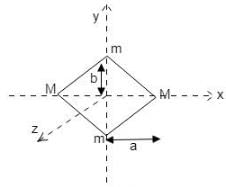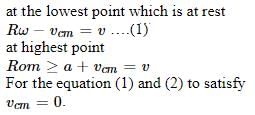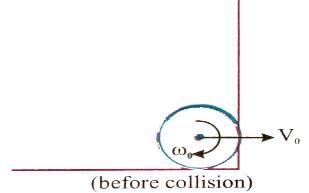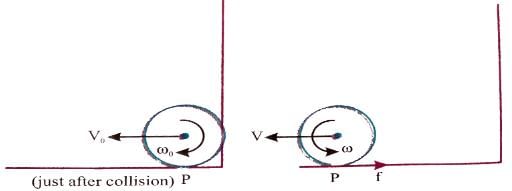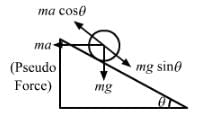Test: Rotational Motion (Competition Level 2) - JEE MCQ
25 Questions MCQ Test - Test: Rotational Motion (Competition Level 2)
ABCD is a square plate with centre O. The moments of inertia of the plate about the perpendicular axis through O is I and about the axes 1, 2, 3 & 4 are I1, I2, I3 & I4 respectively. It follows that :
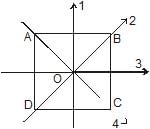
A rod of weight w is supported by two parallel knife edges A and B and is in equilibrium in a horizontal position. The knives are at a distance d from each other. The centre of mass of the rod is at a distance x from A.
A block with a square base measuring axa and height h, is placed on an inclined plane. The coefficient of friction is m. The angle of inclination (q) of the plane is gradually increased. The block will
A body is in equilibrium under the influence of a number of forces. Each force has a different line of action. The minimum number of forces required is
A block of mass m moves on a horizontal rough surface with initial velocity v. The height of the centre of mass of the block is h from the surface. Consider a point A on the surface
Four point masses are fastened to the corners of a frame of negligible mass lying in the xy plane. Let w be the angular speed of rotation. Then
A particle falls freely near the surface of the earth. Consider a fixed point O (not vertically below the particle) on the ground.
A man spinning in free space changes the shape of his body, eg. by spreading his arms or curling up. By doing this, he can change his
A ring rolls without slipping on the ground. Its centre C moves with a constant speed u. P is any point on the ring. The speed of P with respect to the ground is v.
A disc of circumference s is at rest at a point A on a horizontal surface when a constant horizontal force begins to act on its centre. Between A and B there is sufficient friction to prevent slipping, and the surface is smooth to the right of B. AB = s. The disc moves from A to B in time T. To the right of B,
In the figure shown, the plank is being pulled to the right with a constant speed v. If the cylinder does not slip then :
If a cylinder is rolling down the incline with sliding
Which of the following statements are correct
Consider a sphere of mass `m' radius `R' doing pure rolling motion on a rough surface having velocity as shown in the Figure. It makes an elastic impact with the smooth wall and moves back and starts pure rolling after some time again.
A solid sphere, a hollow sphere and a disc, all having same mass and radius, are placed at the top of an incline and released. The friction coefficients between the objects and the incline are same and not sufficient to allow pure rolling. The smallest kinetic energy at the bottom of the incline will be achieved by
Fig. shows a smooth inclined plane fixed in a car accelerating on a horizontal road. The angle of incline q is related to the acceleration a of the car as a = g tan q. If the sphere is set in pure rotation on the incline.
The figure shows an isosceles triangular plate of mass M and base L. The angle at the apex is 90°. The apex lies at the origin and the base is parallel to X - axis.
The moment of inertia of the plate about the z-axis is
The moment of inertia of the plate about the x-axis is
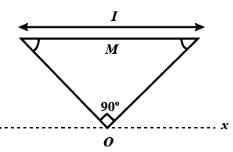
The moment of inertia of the plate about its base parallel to the x-axis is

The moment of inertia of the plate about the y-axis is
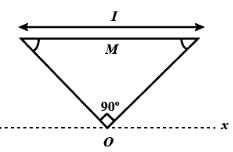
A uniform rod is fixed to a rotating turntable so that its lower end is on the axis of the turntable and it makes an angle of 20° to the vertical. (The rod is thus rotating with uniform angular velocity about a vertical axis passing through one end.) If the turntable is rotating clockwise as seen from above.
What is the direction of the rod's angular momentum vector (calculated about its lower end)
Is there a torque acting on it, and if so in what direction?
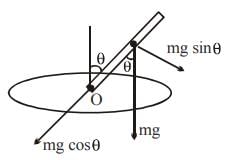
A cylinder and a ring of same mass M and radius R are placed on the top of a rough inclined plane of inclination q. Both are released simultaneously from the same height h.
Choose the correct statement(s) related to the motion of each body
When these bodies roll down to the foot of the inclined plane, then



